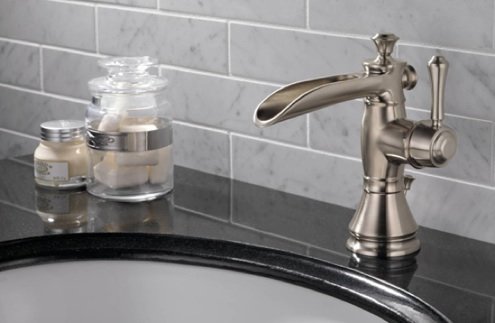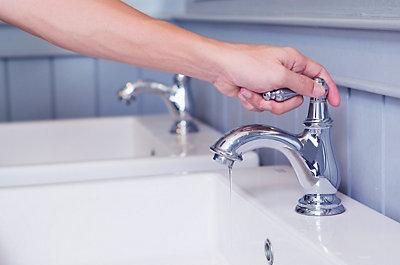Uncovering the Importance of Resolving a Faulty Faucet
Call TodayHow do you feel in relation to How to Fix a Dripping or Leaky Faucet ?

Leaking faucets may look like a minor inconvenience, yet their impact exceeds simply the nuisance of the audio. From wasting water to sustaining unneeded economic expenses and health threats, overlooking a dripping tap can cause various effects. In this short article, we'll look into why it's critical to address this typical household problem quickly and effectively.
Waste of Water
Environmental Influence
Leaking taps add considerably to water wastage. According to the Environmental Protection Agency (EPA), a solitary tap trickling at one drip per second can squander greater than 3,000 gallons of water annually. This not only strains water resources but also impacts ecological communities and wildlife based on them.
Financial Prices
Increased Water Expenses
Past the environmental impact, dripping faucets can pump up water expenses significantly. The collected waste in time equates into higher utility costs, which might have been prevented with timely repairs.
Prospective Property Damages
In addition, extended leaking can bring about damage to fixtures and surface areas bordering the faucet. Water accumulation can create staining, corrosion, and also structural issues if left neglected, resulting in added repair service prices.
Health and wellness Worries
Mold and Mold Development
The consistent existence of wetness from a trickling tap creates a suitable setting for mold and mildew and mildew growth. These fungi not only endanger interior air quality yet also present health dangers, specifically for people with breathing problems or allergies.
Waterborne Illness
Stationary water in dripping taps can end up being a breeding ground for bacteria and other virus, raising the danger of waterborne diseases. Impurities such as Legionella germs flourish in stationary water, potentially bring about severe ailments when ingested or breathed in.
DIY vs. Expert Repair work
Pros and Cons of DIY Fixing
While some may try to repair a trickling faucet themselves, DIY repair work feature their own set of challenges. Without proper understanding and devices, do it yourself efforts can aggravate the issue or lead to incomplete repair services, lengthening the issue.
Advantages of Hiring a Professional Plumber
Hiring a professional plumber ensures that the underlying reason for the leaking tap is addressed effectively. Plumbing professionals have the expertise and equipment to identify and repair tap concerns efficiently, saving time and reducing the risk of further damages.
Step-by-Step Overview to Taking Care Of a Dripping Faucet
Tools Required
Before trying to deal with a leaking faucet, collect the required devices, consisting of an adjustable wrench, screwdrivers, replacement components (such as washers or cartridges), and plumber's tape.
Common Tap Issues and Their Solutions
Determine the sort of faucet and the details issue triggering the drip. Usual issues include damaged washing machines, rusty shutoff seats, or malfunctioning O-rings. Refer to manufacturer directions or on-line tutorials for detailed guidance on repair services.
Safety nets
Regular Upkeep Tips
To stop dripping faucets, perform routine maintenance such as cleaning up aerators, evaluating for leakages, and changing worn-out parts quickly. Furthermore, think about mounting water-saving tools or updating to extra reliable components.
Importance of Prompt Fixes
Addressing trickling taps as quickly as they're seen stops additional water wastage and possible damage, ultimately conserving both water and money in the future.
Effect On Home Value
Understanding of Well-Maintained Property
Preserving a home in good condition, consisting of addressing upkeep issues like leaking taps, improves its regarded worth and worth amongst prospective purchasers or occupants.
Impact on Resale Worth
Features with well-maintained plumbing fixtures, including faucets, command higher resale worths in the property market. Resolving trickling faucets can contribute to a positive impact throughout home evaluations and negotiations.
Environmental Responsibility
Specific Contribution to Conservation
Taking responsibility for fixing trickling faucets aligns with broader efforts toward water conservation and environmental sustainability. Every person's actions jointly make a significant influence on preserving priceless resources.
Sustainable Living Practices
By prioritizing timely repair work and embracing water-saving practices, individuals add to lasting living practices that benefit both existing and future generations.
Conclusion
Attending to a trickling tap exceeds mere convenience; it's an important action towards preserving water, lowering economic prices, and safeguarding wellness and residential or commercial property. Whether with do it yourself repair work or professional aid, doing something about it to take care of leaking faucets is a small yet impactful way to promote responsible stewardship of sources and contribute to a much healthier, much more sustainable future.
How to Fix a Dripping or Leaky Faucet
A leaking faucet is one of the most common problems that homeowners encounter, but it being commonplace doesn’t make it any less annoying. The constant drip drip drip of a leaking bathtub faucet, showerhead, or sink tap can disturb your home’s serenity. Left neglected, a dripping faucet can also result in higher water bills and discoloration or mold growth in your sink or plumbing fixtures.
Fortunately, you don’t have to be a trained plumber to know how to stop a dripping faucet. With some basic tools, replacement parts, and a little patience, leaky faucet repair is a breeze. In this article, we’ll explain what causes dripping faucets and how you can fix them.
What Causes a Leaking Faucet?
Kitchen and bathroom faucets come in all manner of designs, but most involve some combination of valves, O-rings, seals, and washers. The O-ring is usually the weakest link, but any one of these pieces can wear down over time. Heat, moisture, temperature fluctuations, minerals, mold, and movement can contribute to warping and corrosion, breaking the watertight seal. This just comes with the territory of being a homeowner. Everything is always subject to wear and tear, and some component parts of your appliances and fixtures need to be replaced on occasion. At least replacement O-rings are cheap!
More rarely, dripping faucets can be a symptom of excessively high water pressure. Were this the case in your home, you would probably notice that the leak is not isolated to one faucet. Water pressure issues are harder to resolve on your own. We recommend contacting a professional plumber if you suspect your water pressure is too high.
How to Fix a Dripping Faucet
Pipe wrench or monkey wrench Allen wrench set Screwdrivers Old towel or rag Shut off the water.
Before you do anything, you need to turn off the water to keep from drenching your kitchen or bathroom. You should find a valve under the sink and against the wall. Once you’ve turned this valve, try turning the faucet on to confirm that the water source has been cut off.
If you can’t locate your local valve for the faucet you’re working on, you can always shut off the water to the house at the main valve. Of course, this will prohibit anyone from using the sinks, showers, or toilets while you’re working on the faucet that’s giving you trouble.
Plug or block the drain.
You’ll be disassembling the faucet and removing some small bits of hardware. Plug the drain with a stopper or rag to avoid the possibility of a small screw falling into your P-trap.
Take apart the faucet assembly.
There are several varieties of kitchen and bathroom faucets, each with its own manner of assembly. For detailed instructions on how to disassemble your faucet, you can refer to the fixture’s manual or contact the manufacturer. If you know whether you have a ball, disc, cartridge, or compression faucet, you can find detailed schematics online.
In general, you need to begin by removing the faucet handles. You might notice a small screw that you’ll need to remove with a screwdriver or Allen wrench. If you don’t see any visible securing hardware, it’s likely hidden under a decorative cap that can be unscrewed or popped off with flathead screwdriver.
Remove each piece methodically, consulting a schematic when necessary. Take notes or arrange the pieces in such a way to make it easier to correctly reassemble the faucet later.
Remove the cartridge.
Once you’ve removed the handles and securing hardware, you should be able to remove the valve cartridge or stem. Some cartridges will slide right out. Other faucet models will require you to loosen a nut with a pipe wrench before you can remove the valve stem.
Examine the exposed hardware.
With the cartridge or stem removed, inspect the component parts. Check the rubber O-rings for wear and tear. Also examine the seat washer for corrosion or other damage. These pieces are usually the responsible parties for a dripping faucet, but it’s worth inspecting the other component parts while you have the faucet disassembled.
Find replacement parts.
Once you’ve identified which faucet component has failed, find an identical replacement. Your local hardware store should have O-rings, seat washers, and other standard components in stock. If you have a luxury or uncommon faucet, you may have to contact the manufacturer for a replacement part.
It’s a good idea to take your old parts with you to the hardware store so you can compare them with the store’s inventory and be sure you’re purchasing the correct replacement.
Reassemble the faucet.
With your new parts in hand, reconstruct the faucet and handles. Don’t be tempted to overtighten screws or nuts. You might think this could create a better seal, but it can instead damage or bend a delicate part of the assembly and create a new problem for you.
Turn on the water and test the faucet.
The only thing left to do is test your work. Unplug the sink, turn the water back on, and try the faucet. Congratulate yourself on a job well done!
https://www.libertyhomeguard.com/how-to-fix-a-dripping-or-leaky-faucet/

I ran across that piece of writing about How to Fix a Dripping or Leaky Faucet when perusing the web. Sharing is good. Helping others is fun. Thanks for your time. Don't forget to check our blog back soon.